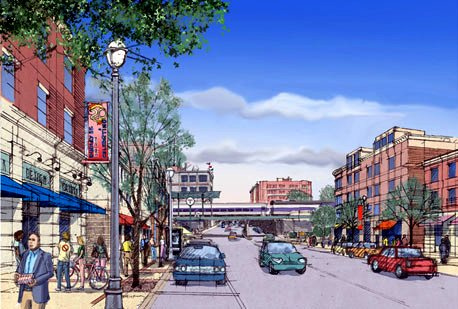
Ed. Note: Cross-posted from the FastLane
Two years ago, President Obama offered a new vision for sustainable communities (PDF) and vastly improved how our agencies work together. He challenged us to coordinate our efforts and help build communities where housing, public transportation, jobs, and services are conveniently connected, where businesses thrive, and where the air, water and land are clean.
Check out this video about building sustainable near Boston here.
That is the goal of the HUD-DOT-EPA Partnership for Sustainable Communities. And since June 2009, we have worked to help improve access to affordable housing, provide more transportation options at lower costs, and protect the environment in communities across the nation.
Americans have made it clear they want their communities back—back from the neglected brownfields of earlier decades, back from traffic congestion and sprawl, and back from housing choices that exclude most families.
In places like Ranson, West Virginia, and Boston, Massachusetts, residents are already benefiting from our Partnership's coordinated efforts to help revitalize neighborhoods and reposition them for a more sustainable future.
In Ranson, the Partnership aligned planning grants and assistance from our three agencies to integrate affordable housing, economic development, and transportation to build a livable community. An EPA Brownfields Area-Wide Planning Grant will help Ranson prioritize cleanup of contaminated lots and develop reuse plans based on community input while EPA's Sustainable Communities Building Blocks assistance will help the city ensure that its development codes promote the kind of growth residents want. Using a DOT TIGER II Planning Grant, Ranson will create a Complete Street plan for the important Fairfax Boulevard / George Street corridor. This will ensure easy and safe downtown access for pedestrians and bicyclists as well as motorized vehicles. And a HUD Challenge Planning Grant will help Ranson develop a smart building code that encourages more compact, walkable development patterns.
Coordinating these grants and assistance will help Ranson create more affordable housing and transportation choices for its residents—saving them money, protecting their air and water, and encouraging long-term economic growth.
The Fairmount Corridor in Boston connects several low-income neighborhoods that rely heavily on public transit. Although a rail line runs along the corridor, it largely bypasses these areas. Boston municipal agencies and regional community groups have been working with the Partnership agencies to improve access to the Fairmount Corridor and open up more economic, environmental and recreational opportunities for neighborhood residents. DOT support is helping upgrade infrastructure, refurbish two transit stations, and build four more. HUD is helping build new affordable homes near these stations. And EPA is helping clean up nearby brownfield sites and prepare station areas for redevelopment. When this work is complete, residents will enjoy more accessible rail service between Boston and the surrounding region, greater prospects for economic development around local stations, new affordable housing choices and more opportunities to improve their lives and the lives of their families.
From Portland, Oregon, to Portland, Maine, DOT, EPA, and HUD have worked closely together to support innovative ideas from communities that help meet their housing, transportation, economic, and environmental challenges head-on. When we back local innovation with coordinated, targeted investments, the economic ripple effect creates jobs, supports business development, and helps keep America on track toward economic recovery and long-term prosperity.
As the President said last October, "We're working to change the way government works, and that means investing tax dollars wisely and well."
For more information, please visit the Partnership for Sustainable Communities website.



